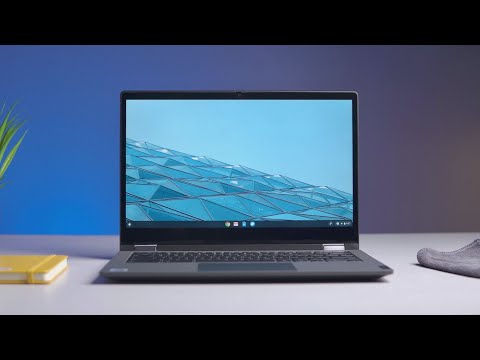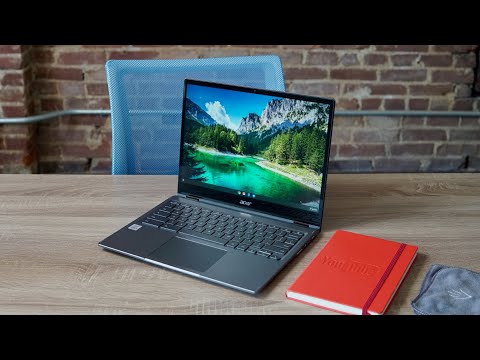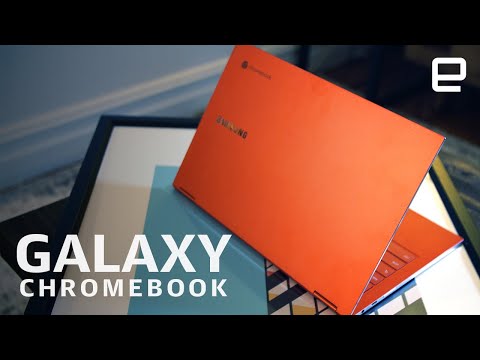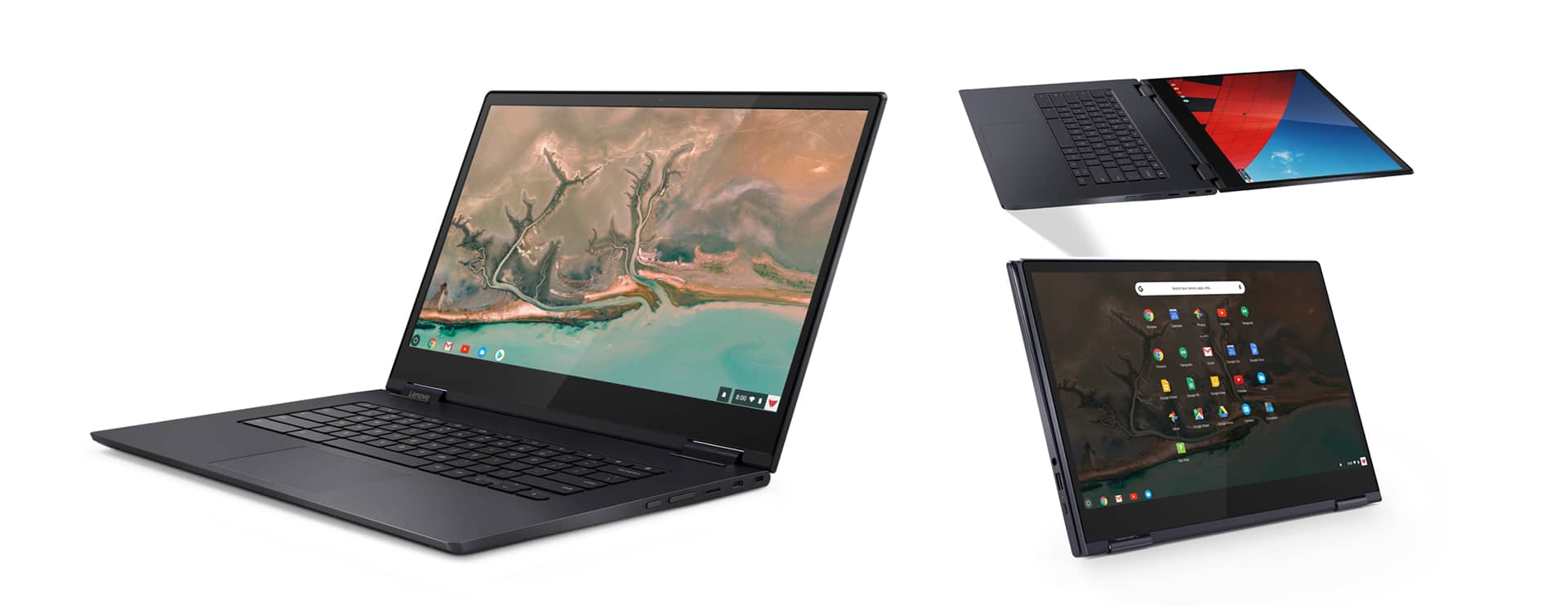Chromebooks are snappy, easy to use, and inexpensive computers designed for everyday use and Internet-based activities such as browsing, email, text-editing, Youtube, Netflix, light gaming, and the likes.
Many options start at under $300 these days and for that kind of money you’ll get a fully functional computer able to handle the activities mentioned above, which makes those inexpensive Chromebooks excellent for kids, students, and pretty much anyone else who needs a simple and affordable computer for basic use. They also last for hours on a charge, start in seconds, and don’t slow down as they age.
At the same time, those of you looking for nicer made devices, higher-quality screens, backlit keyboards, snappier multitasking performance, longer battery life, and other modern features will need to spend a little more, and the market offers plenty of options these days, which should cater to even the pickiest of buyers.
We’ve reviewed and compared many of the available Chromebooks here on Ultrabookreview.com, and in this post, we’ll help narrow down your options to the devices that would better fit your needs and budget, based on their features, strong points, and quirks. For your convenience, we’ve split the article into three main sections:
- Budget Chromebooks (selling for under $300);
- Value options ($300 to $500);
- Premium Chromebooks ($500+).
One more heads-up, though. Before we get to talk about the actual recommendations, I want you to be absolutely sure that a Chromebook is the right pick for you, so make sure to check out my detailed Chromebook buying guide first.
Best budget Chromebooks (under $300)
There are quite a few competitive Chromebooks selling for under $300 these days, making for excellent Chromebooks for kids, affordable travel companions, or just the go to’s for those of you on a limited budget.
Down below you’ll find a more detailed list of the options that you should consider in this class, and we’ll get in-depth on our recommendations afterward.
Keep in mind that we’ve only included the more recent products that are on-par with today’s requirements in this list. You’ll still find other options in stores as well, older Chromebooks and many of them selling for as less as $200 (follow this link for more details), but I’d advise stretching your budgets for one of these if possible, as they are significant upgrades in terms of design, features, and especially the way they perform with everyday use, as these are built on updated hardware platforms.
| Format, made of | Price | Screen | Hardware | Weight | Battery | |
| Acer Chromebook 314 | Clamshell, part metal | ~$230 | 14″ HD/FHD IPS matte | Celeron Braswell or Apollo Lake / 4-8 GB RAM / 32-64 GB eMMC | 3.4 lbs | 45 Wh |
| Acer Chromebook 315 | Clamshell, plastic | ~$259 | 15.6″ HD TN or FHD IPS matte | Celeron Gemini Lake or AMD R4 / 4 GB RAM / 32-64 GB eMMC | 3.3 lbs | 8+ h |
| Acer Chromebook Spin 311/511 |
Convertible, plastic | ~$270 | 11.6″ HD IPS touch, EMR pen | Celeron Apollo Lake / 4 GB RAM / 32 GB eMMC | 2.9 lbs | 10 h |
| Asus Chromebook C202 | Clamshell, rugged plastic | ~$300 | 11.6″ HD TN matte | Celeron Braswell / 4 GB RAM / 16 GB eMMC | 2.5 lbs | 38 Wh |
| Asus Chromebook C423 | Clamshell, plastic | ~$300 | 14.0″ HD/FHD TN matte or touch | Celeron Apollo Lake / 4 GB RAM / 32-64 GB eMMC | 2.65 lbs | 38 Wh |
| Asus Chromebook C523 | Clamshell, plastic | ~$280 | 15.6″ HD/FHD TN matte or touch | Celeron Apollo Lake / 4 GB RAM / 32-64 GB eMMC | 3.1 lbs | 38 Wh |
| Dell Chromebook 11 | Clamshell, plastic | ~$250 | 11.6″ HD TN matte/touch | Pentium Apollo Lake/ 4 GB RAM / 32-64 GB eMMC | 2.9 lbs | 42 Wh |
| HP Chromebook 11 | Clamshell, plastic | ~$250 | 11.6″ HD IPS matte/touch | Mediatek/ 4-8 GB RAM / 16-64 GB eMMC | 2.4 lbs | 44 Wh |
| HP Chromebook 14 | Clamshell, plastic | ~$220 | 14″ HD IPS matte/FHD touch | Celeron Gemini Lake or AMD R4/ 4-8 GB RAM / 16-64 GB eMMC | 3.4 lbs | 47 Wh |
| Lenovo Chromebook Duet | tablet, mostly metal | ~$240 | 10.1″ 16:10 FHD+ IPS touch | MediaTek/ 4 GB RAM / 64 GB SSD | 2 lbs | 27 Wh |
| Lenovo Chromebook 3 | Clamshell, plastic | ~$230 | 11.6″ HD TN matte | Celeron Apollo Lake / 4 GB RAM / 32-64 GB eMMC | 2.5 lbs | 42 Wh |
| Lenovo Chromebook S330 | Clamshell, plastic | ~$250 | 14.0″ HD IPS matte | MediaTek / 4 GB RAM / 32-64 GB eMMC | 2.5 lbs | 42 Wh |
| Lenovo Chromebook C340 (Flex 11) | Convertible, plastic | ~$300 | 11.6″ HD IPS touch | Celeron Gemini Lake/ 4 GB RAM / 32-64 GB eMMC | 2.6 lbs | 42 Wh |
| Samsung Chromebook 4 | Clamshell, plastic | ~$250 | 11.6″ HD IPS matte | Celeron Gemini Lake/ 4-6 GB RAM / 32 GB eMMC | 2.6 lbs | 39 Wh |
Specs are definitely important at this level, as even if you’re after a basic Chromebook, you’ll still want something that can actually handle basic tasks smoothly. To keep things simple, I’d recommend getting a device with at least an Intel Apollo Lake processor (or AMD/Mediatek equivalent), at least 4 GB of RAM, and 32 GB of storage (preferably 64+ GB).
Hardware aside, keep in mind that many of the options in this section are still plastic made clamshell Chromebooks with matte screens and TN panels, non-backlit keyboards, and average build quality. There are some exceptions that are partially made out of metal, include IPS screens or even a touchscreen, and that’s what I’d primarily look into.
Now, as far as our actual recommendations go in this segment, there’s one option that steps-in front of the others, and that’s the Lenovo Chromebook Duet.
Starting at under $250, this is a metallic-made compact and lightweight tablet with a surprisingly good 16:10 FHD+ touchscreen, with pen support. Furthermore, a keyboard-folio is also included by default, for laptop-use, and the MediaTek hardware platform is capable enough for everyday use and some multitasking.
However, keep in mind that the Chromebook Duet is only a 10-inch device and bundles a smaller battery as a result, but it can still last for 6+ hours of daily use and 8+ of video. Finally, the Duet is not that easy to find in stock these days, and that’s no surprise considering the unmatched value you’re getting here. If you’re fine with such a small Chromebook, go for it, there’s no better alternative in this segment.
On the other hand, if you’re looking for a device with a larger screen or larger battery, or perhaps prefer the traditional laptop form-factor that would make the computer more convenient to use on the lap, Dell, HP, Lenovo, and especially Asus offer some inexpensive and ruggedly built options, but most of them with TN screens. Lenovo’s Chromebook C340 or the Acer Spin 11 sell for a bit extra, but replace the TN matte panel with convertible 360-degree IPS touchscreens, something I’d gladly pay for.
As we move up in size, the offer for larger Chromebooks with 14-inch screens starts with the more affordable HP Chromebook 14, Acer Chromebook C314 or Lenovo Chromebook S330, and goes up to the more portable Asus C423. Finally, both Asus and Acer still offer 15-inch Chromebooks in this price range, if that’s what you’re after, but you’re sacrificing portability for that larger display.
Overall, I recommend going through more detailed reviews for each of these if you prefer this sort of a larger-format device, but I’d rather advise you to step up to the next price-category for better-made options with higher-quality screens and faster hardware.
Some of the affordable Chromebooks
The best-value Chromebooks ($300 to $500)
Having used many of the existing Chromebooks, I’m convinced that you can get better value for your money in this price segment, especially if you’re after a well-rounded laptop with a mid-sized 12 to 14-inch display. You’re not just getting a bigger and improved screen on these options, but also a more spacious and more comfortable keyboard, a larger battery, extra ports, as well as improved build-quality.
First off, just as in the previous section, here’s a more detailed list of the Chromebooks worth considering in this segment as of right now, and we’re getting into more details down below.
| Format, made of | Price | Screen | Hardware | Weight | Battery | |
| Acer Chromebook 514 | Clamshell, all metal | ~$350 | 14″ FHD IPS touch matte | Celeron or Pentium Apollo Lake / 4-8 GB RAM / 32-64 GB eMMC | 3.3 lbs | 56 Wh |
| Acer Chromebook 715 | Clamshell, all metal | ~$499 | 15.6″ FHD IPS touch matte | Core U / 8 GB RAM / 64 GB-128 eMMC | 3.9 lbs | 56 Wh |
| Acer Chromebook R13 | Convertible, partially metal | ~$350 | 13.5″ FHD touch | Mediatek / 4 GB RAM / 32 GB eMMC | 3.3 lbs | 54 Wh |
| Acer Chromebook Spin 15 | Convertible | ~$399 | 15.6″ FHD IPS touch | Pentium Apollo Lake / 4 GB RAM / 32-64 GB eMMC | 3.8 lbs | 54 Wh |
| Asus Chromebook C425 | Clamshell, partially metal | ~$350 | 14.0″ FHD IPS matte or touch | C0re Y / 8 GB RAM / 32-128 GB eMMC | 2.8 lbs | 48 Wh |
| Asus Chromebook Flip C214 | Convertible, rugged plastic | ~$400 | 11.6″ HD IPS touch, EMR pen | Pentium Apollo Lake/ 4 GB RAM / 32 GB eMMC | 2.6 lbs | 46 Wh |
| Asus Chromebook Flip C433 | Convertible, partially metal | ~$500 | 14″ FHD IPS touch | Core Y/ 4-8 GB RAM / 64-128 GB eMMC | 3.2 lbs | 48 Wh |
| Dell Inspiron 11 2-in-1 Chromebook | Convertible, plastic | $399 | 11.6″ HD WVA touch | Celeron Apollo Lake/ 4 GB RAM / 32 GB eMMC | 3.1 lbs | 42 Wh |
| Dell Chromebook 14 | Clamshell, plastic | $329 | 14.0″ FHD TN matte | Pentium Apollo Lake/ 4-8 GB RAM / 32-64 GB eMMC | 3.5 lbs | 42 Wh |
| Google Pixel Slate | Tablet, aluminum | $449 | 12.3″ FHD++ 3:2 IPS touch, EMR pen | Core Y / 8-16 GB RAM / 128-512 GB SSD | 1.6 lb | 47 Wh |
| HP Chromebook 15 | Clamshell, mostly metal | ~$500 | 15.6″ HD IPS matte/FHD touch | Pentium Gold or Core U / 4 GB RAM / 64-128 GB eMMC | 4 lbs | 60 Wh |
| HP Chromebook x360 12 | Convertible, all metal | ~$350 | 12″ HD+ 3:2 IPS touch | Pentium Apollo Lake or Gold/ 4-8 GB RAM / 32-64 GB eMMC | 3 lbs | 40 Wh |
| HP Chromebook x360 14 | Convertible, all metal | ~$380 | 14″ FHD IPS touch | Pentium Gold or Core U/ 4-8 GB RAM / 64-128 GB eMMC | 3.7 lbs | 47 Wh |
| Lenovo Chromebook 300e/500e | Convertible, plastic | ~$400 | 11.6″ HD IPS touch, EMR pen | Mediatek or Gemini Lake/ 4-8 GB RAM / 32-64 GB eMMC | 3 lbs | 42 Wh |
| Lenovo Chromebook Flex 5 13 | Convertible, all metal | ~$410 | 13.3″ FHD IPS touch | Core U/ 4 GB RAM / 64 GB SSD | 3 lbs | 51 Wh |
| Samsung Chromebook 4+ | Clamshell, plastic | ~$400 | 15.6″ FHD TN matte | Celeron Gemini Lake/ 4-6 GB RAM / 16-32 GB eMMC | 3.8 lbs | 39 Wh |
| Samsung Chromebook Plus v2 |
Convertible, mostly metal | ~$500 | 12.2″ IPS FHD 16:10 touch | Celeron Y / 4 GB RAM / 32 GB eMMC | 2.95 lbs | 39 Wh |
At the more portable end, the Samsung Chromebook Plus and especially the Google Pixel Slate stand-out of the crowd, both 12-inch convertibles.
The Pixel Slate is primarily a tablet, thus great for tablet/pen use, but perhaps not as versatile as a laptop. It’s excellently crafted, gets a splendid 3:2 touchscreen, as well as competent Intel Core hardware and a large battery that allows for 10+ hours of daily use. The typing experience is not on-par with some of the other options in this price range, though, and the keyboard deck or the pen are not included by default and will cost around $150 on top of the actual tablet, which alone could be enough to steer many of your towards something else.
The Samsung Chromebook Plus v2, on the other hand, is a 2-in-1 convertible and includes the keyboard by default for $500. It comes with a 16:10 touchscreen with pen support, but is nor as powerful or as lightweight as the Slate, so mostly an option for those of you who value this sort of display and form-factor over other aspects, such as battery life or performance. And even if that’s what you’re after, something like the more affordable HP Chromebook x360 12 might better suit your needs than the Samsung model.
With these smaller options out of the way, my main recommendation in this price-range goes once more towards a Lenovo Chromebook, the excellent Flex 5 13. At $409 MSRP, without accounting for potential discounts, this laptop punches way above its class and successfully challenges many of the more expensive products.
The construction is part metal and part plastic, much like with the Windows-based IdeaPads, the format allows the screen to convert to 360-degrees, Lenovo implemented a good-quality IPS touchscreen with 300-nits of brightness and fine colors, and the backlit keyboard is one of the better available on any Chromebook.
On top of these, the Core i3 platform is snappy enough for everyday use, the 51Wh battery ensures 10+ h of life on a charge, and even if some of you might appreciate more memory and storage space, 4 GB are still enough for most potential buyers on a Chromebook.
Bottom point, sure, you can get more refined Chromebooks if your willing to spend $600+, but at roughly $400, there’s nothing out there that can match the Flex 5 at this point.
Jumping into 14-inch models, the Acer Chromebook 514 (clamshell) and the HP Chromebook x360 14 (convertible) are my favorite options in this price segment, and both more affordable than the Lenovo Flex 5. Metal is entirely used for their construction, and the Acer model offers marginally more powerful specs and a larger battery. You won’t be wrong with any of these.
Finally, this class also includes full-size 15-inch Chromebooks with IPS screens, partially metal construction, and large batteries, starting from affordable options such as the convertible Acer Chromebook Spin 15, and all the way up to the HP Chromebook 15. I will also mention the Asus Chromebook C523 and Samsung Chromebook 4+ 15-inchers which sell for less, but you’ll end up with mostly plastic builds and TN screens with these ones, so I’d rather spend my money elsewhere.
Value Clamshell Chromebooks
Premium Chromebooks
While most buyers won’t spend $600 to $1000 on a Chromebook, there are actually quite a few excellent devices available in this segment. With these, you’re getting the uncompromised Chromebook experience, with a mix of upgraded builds, displays, and hardware specs over any of the more affordable options.
Here’s the list of all the premium Chromebooks available as of now, and we’ll get in-depth down below.
| Format, made of | Price | Screen | Hardware | Weight | Battery | |
| Acer Chromebook 714 | Clamshell, all metal | ~$600 | 14″ FHD IPS touch matte | Core U / 8 GB RAM / 64-128 GB eMMC | 3.3 lbs | 56 Wh |
| Acer Chromebook Spin 713 | Convertible, all metal | ~$560 | 13.5″ FHD+ 3:2 IPS touch, EMR pen | Core U / 8-16 GB RAM / 64-128 GB eMMC | 3.2 lbs | 54 Wh |
| Asus Chromebook Flip C436 | Convertible, all metal | ~$700 | 14″ FHD IPS touch | Core U/ 8-16 GB RAM / 128-512 GB SSD | 2.4 lbs | 42 Wh |
| Asus Chromebook Flip C434 | Convertible, all metal | ~$540 | 14″ FHD IPS touch | Core Y/ 4-8 GB RAM / 64-128 GB eMMC | 3.2 lbs | 48 Wh |
| Dell Inspiron 14 2-in-1 Chromebook | Convertible, part metal | $599 | 14″ FHD IPS touch | Core U/ 4-8 GB RAM / 128+ GB eMMC | 3.7 lbs | 56 Wh |
| Google Pixelbook | Convertible, magnesium | $899 | 12.3″ FHD++ 3:2 IPS touch, EMR pen | Core Y / 8-16 GB RAM / 128-512 GB SSD | 2.5 lb | 41 Wh |
| Google Pixelbook Go | Clamshell, magnesium | $649 | 13.3″ FHD 16:9 IPS touch | Core Y / 8-16 GB RAM / 128-512 GB SSD | 2.3 lb | 48 Wh |
| Lenovo Yoga C630 Chromebook | Convertible, all metal | ~$800 | 15.6″ FHD/UHD IPS touch, EMR pen | Core U/ 4-8 GB RAM / 64-128 GB eMMC | 4.2 lbs | 56 Wh |
| Samsung Galaxy Chromebook |
Convertible, all metal | ~$900 | 13.3″ UHD AMOLED touch, EMR pen | Core U / 4-8 GB RAM / 128-512 GB SSD | 2.2 lbs | 49 Wh |
For the most part, the Acer Chromebook Spin 713 and the Google Pixelbook Go are the best-balanced premium Chromebooks you can get these days.
The Pixelbook Go is the late-2019 addition to the Pixel family. It doesn’t replace the convertible Pixelbook, instead, it is designed to sell by its side, as a traditional clamshell notebook with a 16:9 FHD touchscreen, updated hardware, a lighter magnesium shell, punchy speakers, and improved battery life, thanks to the larger battery inside and a more efficient display. The Go is also one of the best typers in this segment, and well as $150-$200 more affordable than a similarly specced Pixelbook Go, all these making it a compelling offer.
It’s not a convertible, though, and it’s built on efficient Intel Core Y hardware, so not as fast as other options.
The Acer Chromebook Spin 13, on the other hand, is a convertible and a true alternative to the original Pixelbook, but with modern specs.
It gets a 13.5-inch convertible FHD+ touchscreen with a 3:2 aspect ratio and a built-in EMR pen, recent Core U hardware, SSD storage, and a backlit keyboard, starting at around $559 at the time of this update. And that’s for a no-compromise Core i5 configuration with 8 GB of memory and 128 GB of SSD storage out of the box, backed up by a 54Wh battery, that creative-focused 3:2 display and fine inputs. In all fairness, though, inputs are one aspect where Acer could further improve this model, alongside the audio quality.
All these make the Chromebook Spin 713 one of the best performing Chromebooks out there and an excellent option for heavy users and those interested in running Linux on such a device.
Now, neither of these two is the ultimate premium Chromebook, a title currently snagged by the Samsung Galaxy Chromebook.
This one is a convertible as well, with a 13.3-inch 16:9 display, but gets a punchy 4K AMOLED panel with amazing colors (100% DCI-P3), brightness, and black levels.
This aside, the build quality and craftsmanship are both A++, with metal used for the entire chassis, and a highly compact and portable format that weighs 2.2 lbs. These make the Galaxy Chromebook more comfortable to use in tablet mode in comparison to other Chromebooks, with only the Pixelbook coming close. In fact, the original Pixelbook is the only other Chromebook that can proudly stand next to this Samsung option in terms of design, construction, and even inputs, but is no longer up-to-date with today’s standards when it comes to performance, battery life, screen, and pen-support, which the Galaxy aces.
Speaking of, the Samsung Galaxy Chromebook is built on Intel Core U hardware, with 8 GB of memory and fast (upgradeable) NVMe storage. This will never choke or hiccup with everything you’ll throw at it, despite the screen’s high 4K resolution. There’s no i7 or 16 GB RAM option, but I don’t think most will need it anyway. As a side note, this is passively cooled, which is an advantage on one hand, but also causes the laptop to run a fair bit warmer than other Chromebooks with similar specs, which are fan-cooled.
OK, so how come isn’t the Galaxy Chromebook the top-recommendation in this class? Well, that’s because the battery life isn’t great here. There’s a 49 Wh battery inside, but with the power-hungry display, the battery life is shorter than you’d normally expect from a Chromebook, at only around 4-6 hours on a charge. On top of that, audio quality is also rather mediocre on this Galaxy, which paired with the high price-tag, pushes it to a third spot behind the other two mentioned earlier.
All these aside, those of you looking for primarily a powerful Chromebook built on Core U hardware, as potential alternatives for the Acer Chromebook Spin 713, should also consider the few other 14-inch options available out there, such as the clamshell Acer Chromebook 714 or the convertible Asus Chromebook Flip C436 and Dell Inspiron 14 2-in-1, each with their own particularities, pros, and quirks.
Lastly, those of you interested in a full-size 15-inch premium Chromebook should still have a look at the Lenovo Yoga C630 Chromebook.
It’s a sturdily crafted computer that borrows from the design and build ques of Lenovo’s ThinkPad lines, with a 15.6-inch touchscreen available with either an FHD or a UHD panel and EMR pen support, Core U hardware, up to 8 GB of RAM, and 128 GB of eMMC storage, as well as a backlit keyboard and 56 Wh battery.
The Yoga Chromebook starts at $599, but don’t forget that even if this is compact and light for a 15-inch convertible, with small bezels and a total weight of 4.2 lbs, it’s still nowhere near as portable as some of the other options out there.
The 15-inch Yoga Chromebook
Wrap-up
Chromebooks have come a long way in recent years, and these days the offer is diversified to cater to every need. Many spend the majority of their time online, and for them, a Chromebook is a compelling and inexpensive option, as a smoother, safer and simpler alternative to the existing Windows laptops.
Now, potential buyers can opt for an affordable option under $300, or get one of the balanced mid-tier laptops with superior builds and screens, snappier performance, long battery life, and still excellent value.
The premium options, on the other hand, are a harder sell, but could still make sense for the regular users that are not interested in specific Windows software or games, and would rather get a simple and snappy computer with an excellent screen and the build quality and battery life they wouldn’t otherwise get in a similarly priced Windows device.
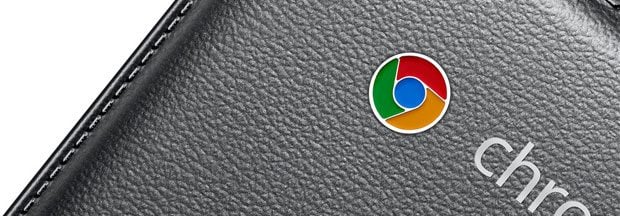
There’s no perfect Chromebook, but a few devices offer a lot for the money
At the end of the day, Chromebooks make for great travel companions, inexpensive laptops for school and even everyday notebooks for those of you who stick to Internet-based activities like browsing, emailing, multimedia and so on. They’re not for everyone, but as long as you’re aware of their strong-points and limitations, I’d expect you’ll end up satisfied with one of these.
That’s about it for now. I’m constantly updating this list of the best Chromebooks available out there, adding new devices as they pop in stores and retiring the obsolete variants, so make sure to bookmark this and check it out from time to time for changes. Last but not least, share this post around if you found it useful and check out the comments section below, it’s open for your suggestions and questions, and I’m around to reply and help you find the best Chromebook for your needs.
The post Best Chromebooks of 2020 – comparisons, reviews and buying guide appeared first on UltrabookReview.com



